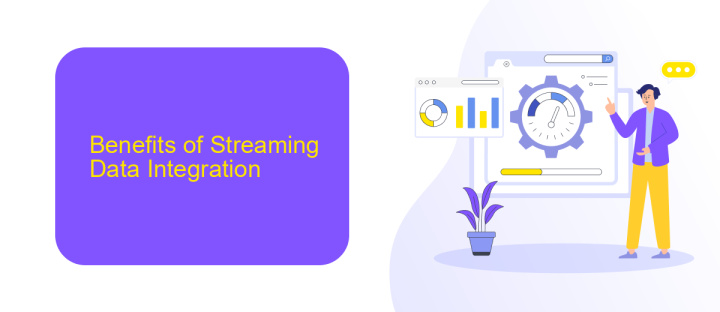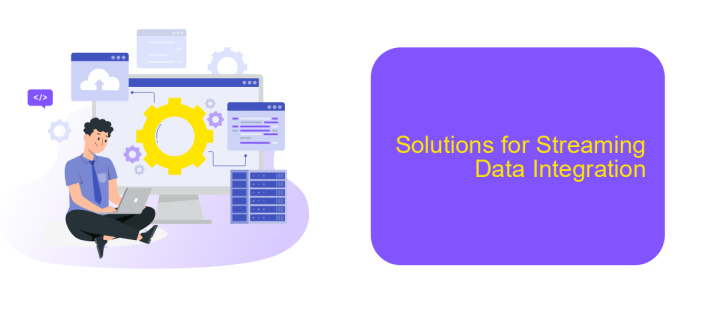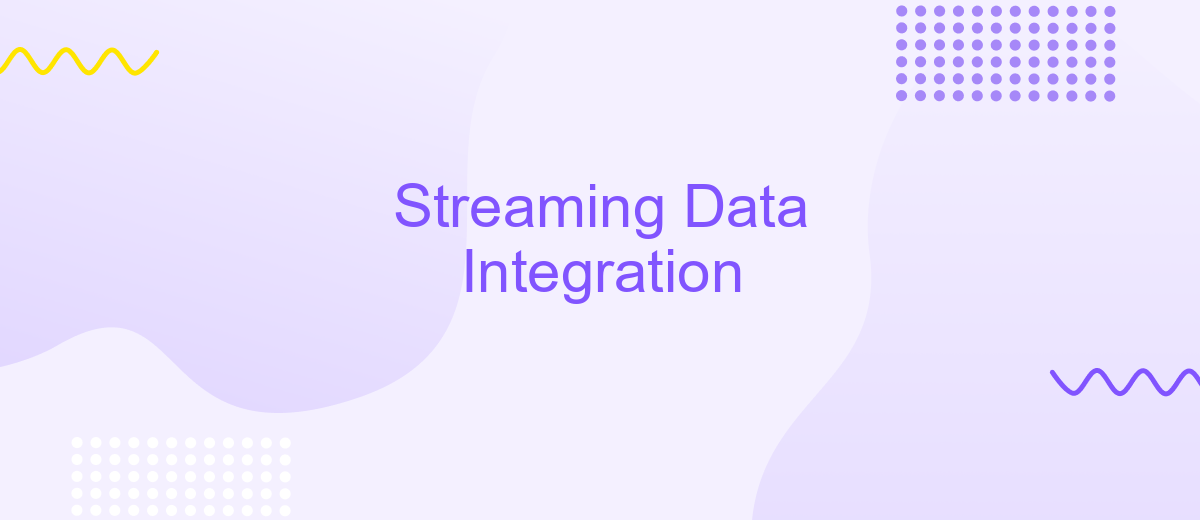Streaming Data Integration
In today's fast-paced digital landscape, streaming data integration has become a cornerstone for real-time analytics and decision-making. By seamlessly merging data from various sources in real-time, businesses can gain immediate insights, enhance operational efficiency, and respond swiftly to market changes. This article delves into the key concepts, technologies, and benefits of streaming data integration, illustrating its critical role in modern data strategies.
Introduction
Streaming Data Integration has emerged as a critical component in modern data ecosystems. It allows organizations to process and analyze data in real-time, providing timely insights and enabling rapid decision-making. As businesses increasingly rely on data-driven strategies, the ability to seamlessly integrate streaming data sources becomes essential.
- Real-time data processing
- Enhanced decision-making capabilities
- Scalability and flexibility
- Seamless integration with existing systems
One of the tools that facilitate effective streaming data integration is ApiX-Drive. This service simplifies the process of connecting various data sources and automating workflows, ensuring that data flows smoothly between systems. By leveraging such platforms, businesses can enhance their data integration strategies and maintain a competitive edge in today's fast-paced environment.
Benefits of Streaming Data Integration

Streaming Data Integration offers numerous benefits, including real-time data processing, which allows businesses to respond to events as they happen. This capability is crucial for industries that rely on timely information, such as finance, healthcare, and retail. By integrating streaming data, organizations can enhance their decision-making processes, improve customer experiences, and increase operational efficiency. Additionally, it supports continuous data flow, ensuring that the most recent data is always available for analysis and action.
Moreover, streaming data integration simplifies the management of data from multiple sources. Services like ApiX-Drive facilitate the seamless integration of various applications and platforms, enabling businesses to automate workflows and synchronize data effortlessly. This not only reduces the complexity of data management but also minimizes the risk of errors and data loss. As a result, companies can maintain a unified and accurate view of their data, leading to more informed strategic decisions and better overall performance.
Challenges of Streaming Data Integration

Integrating streaming data presents numerous challenges that organizations must address to ensure seamless data flow and real-time analytics. These challenges can significantly impact the efficiency and effectiveness of data integration processes.
- Data Latency: Achieving low-latency data processing is crucial for real-time analytics, but it can be difficult due to network delays and processing overheads.
- Data Quality: Ensuring the accuracy, consistency, and completeness of streaming data is essential but challenging, especially when dealing with high-velocity data streams.
- Scalability: Handling the increasing volume of streaming data requires scalable infrastructure, which can be complex and costly to implement and maintain.
- Integration Complexity: Combining data from multiple sources in real-time can be intricate, requiring sophisticated tools and techniques to ensure smooth integration.
- Security and Compliance: Protecting sensitive data and adhering to regulatory requirements in a streaming environment adds another layer of complexity.
To address these challenges, organizations can leverage services like ApiX-Drive, which simplifies the integration process by providing automated data workflows and real-time data synchronization across various platforms. By utilizing such tools, businesses can enhance their streaming data integration capabilities, ensuring timely and accurate data delivery for better decision-making.
Solutions for Streaming Data Integration

Streaming data integration involves the continuous, real-time processing of data from various sources to ensure seamless data flow and timely insights. This approach is essential for businesses that require up-to-the-minute information to make informed decisions and maintain operational efficiency.
There are several solutions available for streaming data integration, each designed to address specific requirements and challenges. These solutions typically include features such as real-time data ingestion, transformation, and delivery to multiple destinations. One such service is ApiX-Drive, which simplifies the integration process by providing a user-friendly platform for connecting various applications and automating data flows.
- Real-time data ingestion: Capturing data from multiple sources as it is generated.
- Data transformation: Converting data into a usable format for analysis and reporting.
- Data delivery: Ensuring that transformed data reaches the intended destinations promptly.
- Automation: Using tools like ApiX-Drive to streamline and automate the integration process.
By leveraging these solutions, organizations can enhance their data integration capabilities, reduce latency, and improve the accuracy of their data-driven decisions. This enables them to respond more quickly to market changes and customer needs, ultimately driving business growth and success.


Conclusion
In conclusion, streaming data integration is a critical component for modern businesses aiming to leverage real-time data for enhanced decision-making and operational efficiency. The ability to seamlessly integrate and process continuous data streams from diverse sources enables organizations to gain timely insights, respond swiftly to market changes, and maintain a competitive edge. Effective streaming data integration requires robust tools and platforms that can handle high volumes of data with low latency and ensure data consistency and accuracy.
Services like ApiX-Drive play a pivotal role in simplifying the setup and management of streaming data integrations. By offering user-friendly interfaces and a wide range of pre-built connectors, ApiX-Drive allows businesses to quickly and efficiently connect various data sources without extensive technical expertise. This not only accelerates the integration process but also ensures that businesses can focus on deriving value from their data rather than getting bogged down by technical complexities. As organizations continue to prioritize real-time data, the importance of efficient streaming data integration solutions will only grow.
FAQ
What is streaming data integration?
Why is streaming data integration important?
What are the common challenges in streaming data integration?
How can I integrate streaming data from multiple sources?
What are some best practices for streaming data integration?
Apix-Drive will help optimize business processes, save you from a lot of routine tasks and unnecessary costs for automation, attracting additional specialists. Try setting up a free test connection with ApiX-Drive and see for yourself. Now you have to think about where to invest the freed time and money!

